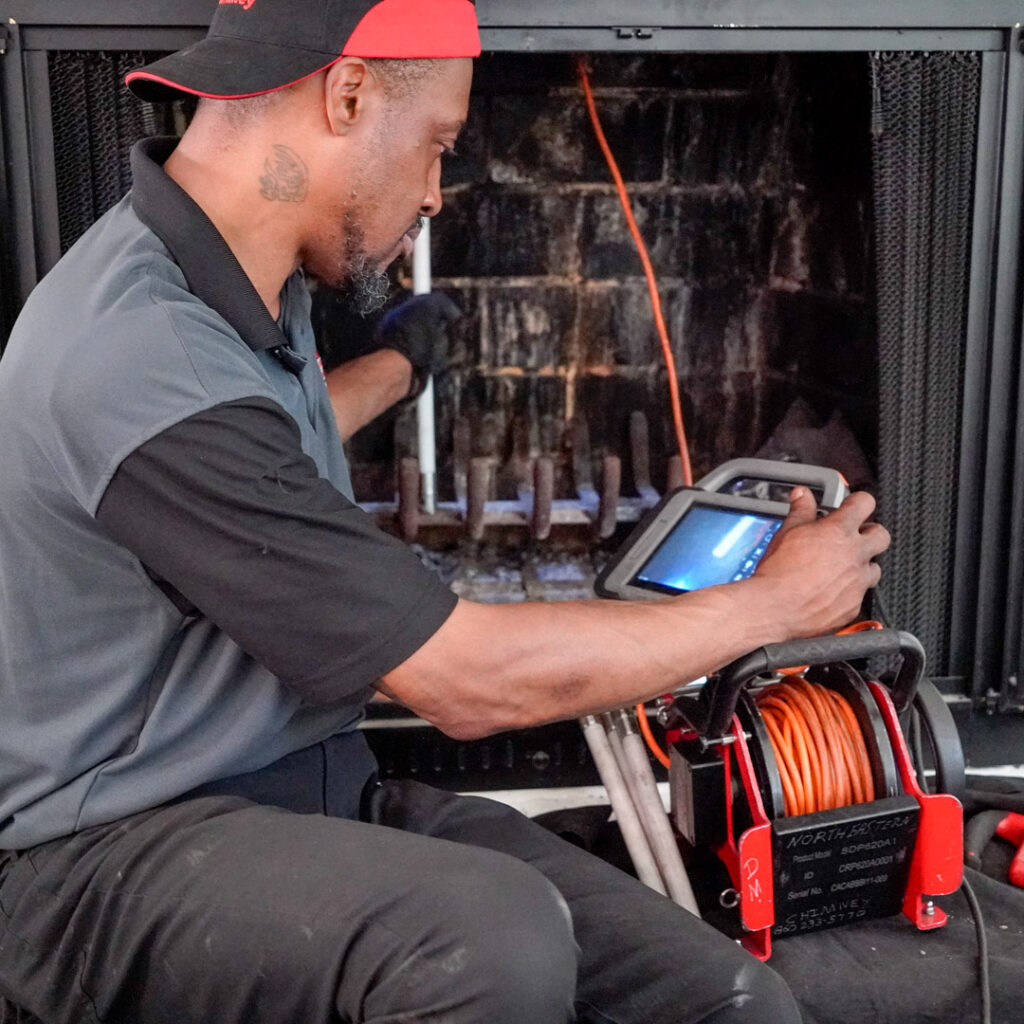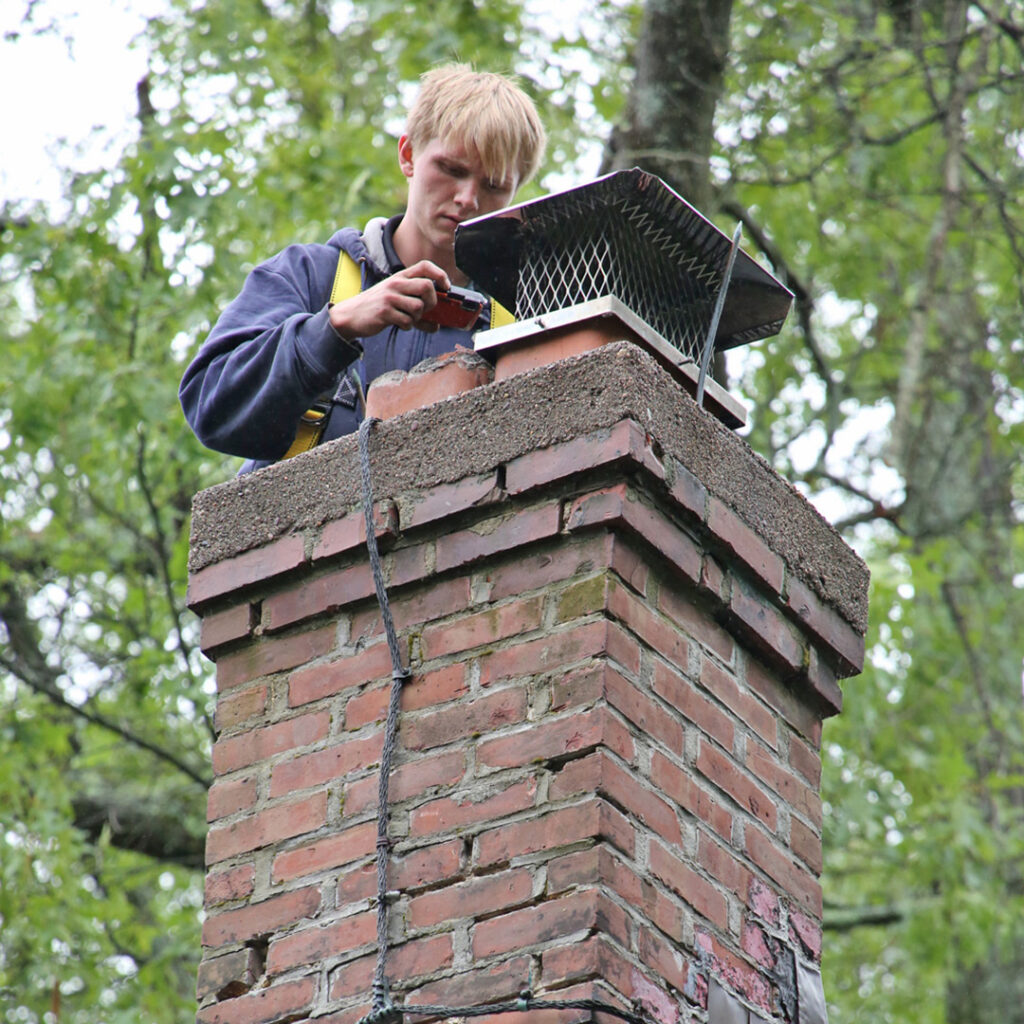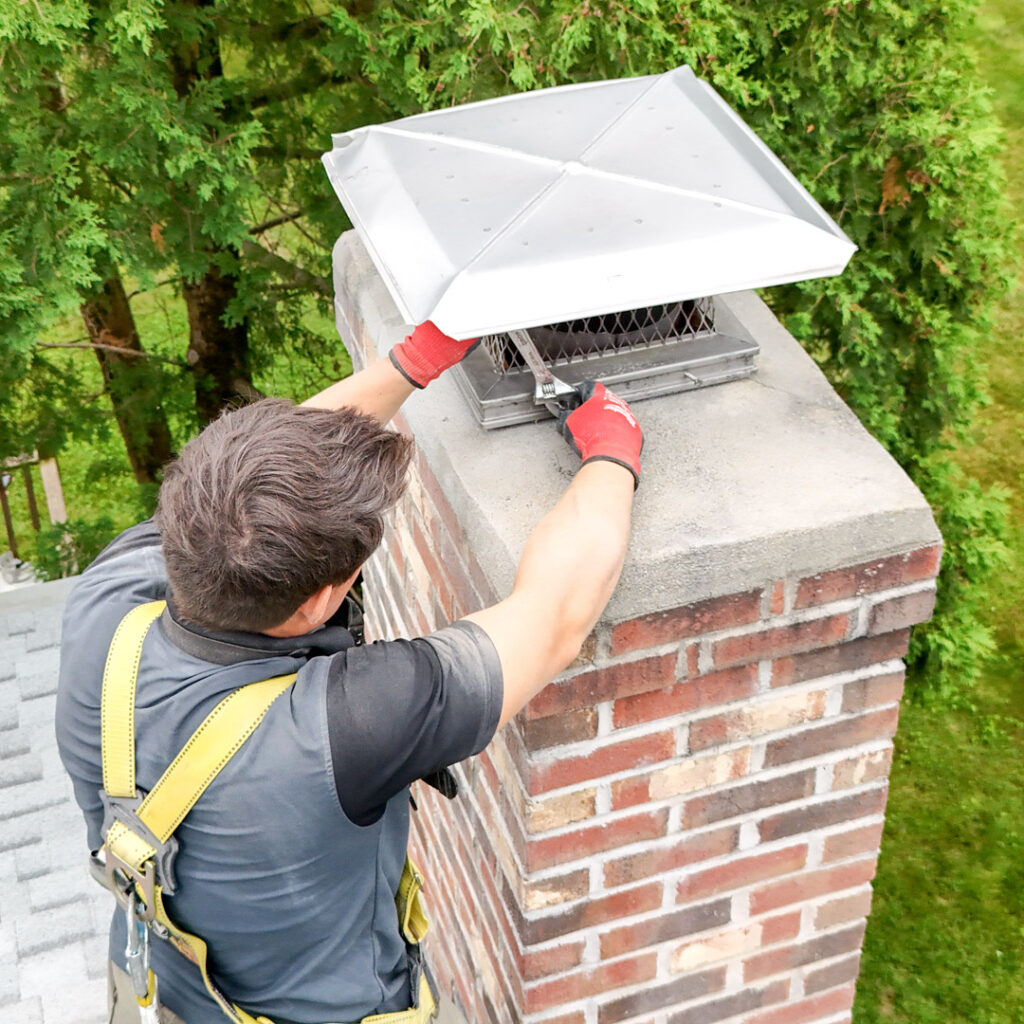Are there Benefits to a Chimney Saver?

Moisture. We’re in a constant battle with moisture. It doesn’t help that we live in the Chicagoland area, and there’s always moisture, or humidity in the air. Now we’re battling hot days, storms, hot days and more storms. And that leads to more moisture and humidity in the air. That constant hot temperatures in the summer and cold weather in the winter with snow and rain storms mixed in, the chimney takes a beating. The best way to protect the chimney, is to apply a chimney saver, a waterproof agent that repels water. Why is chimney saver a good idea?
Moisture is a Problem for Masonry
Ensuring that your chimney is healthy means keeping the chimney maintained annualy. This means keeping the water and moisture out! When it rains, and we all know it will, the materials soak up moisture and because it is a porous material, water invites itself in and slowly begins to deteriorate the bricks and mortar.
Remember we talked about the freeze – thaw cycle? When water freezes, the pores expand. When the water thaws, it leaves a little bit larger space for the water to enter the next time. As this continues to repeat itself each year, the bricks become unstable, crack and eventually fall out.
How Does the Chimney Saver Work?
Using a chimney treatment like our Chimney Saver solution, is one of the best, most affordable ways to prevent rain water from absorbing in the bricks, stone and mortar. What does the chimney treatment do?
- Prevents cracking of the bricks, stone and mortar
- Keeps water out so leaks don’t form
- Maintains the chimney structure
- Extends the life of the chimney
When is it Best to Apply the Chimney Saver?
It’s best during the Spring, Summer and Fall months when it is mostly dry so the sealant is absorbed deep into the bricks and mortar for maximum protection. Chimney Saver is a spray application that gets quickly absorbed into the materials. While we are in the hot summer months, contact us today at 877-244-6349 to get your Chimney Saver applied to the chimney today.
This post first appeared on https://www.superiorchimney.net





 The Chimney Cap: Your First Line of Defense
The Chimney Cap: Your First Line of Defense
